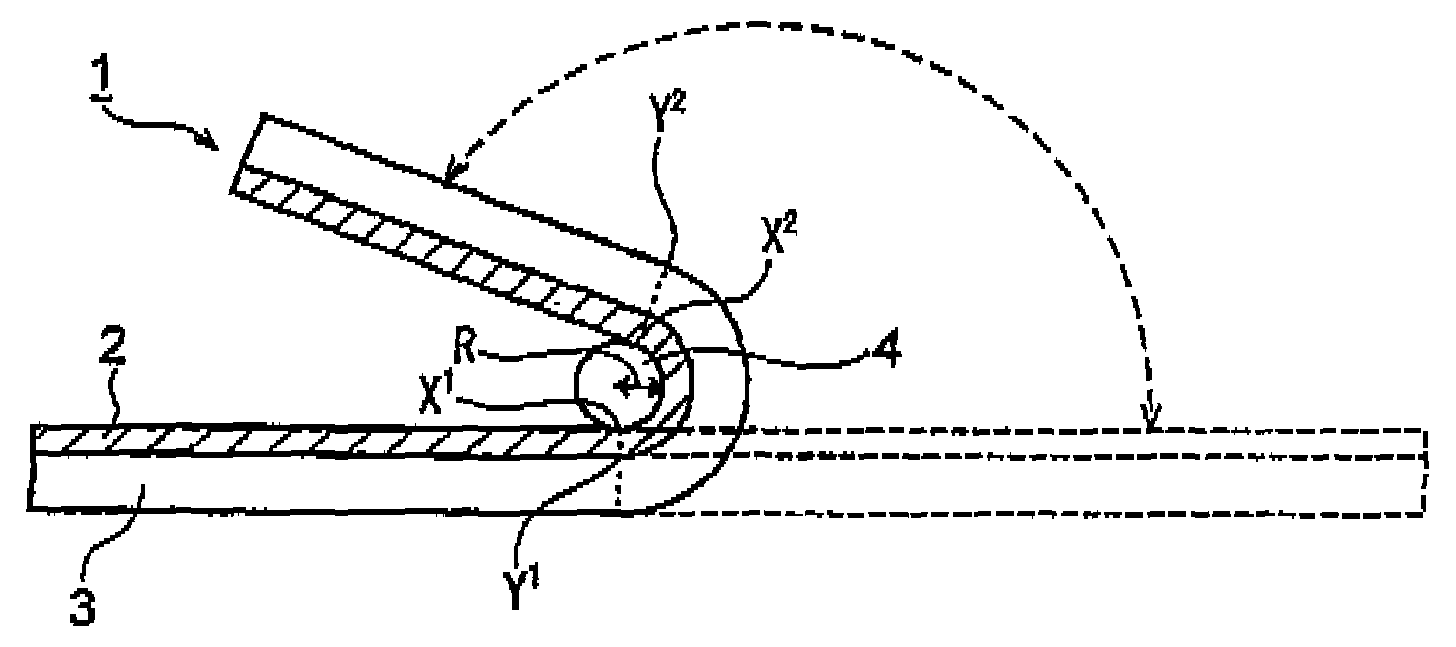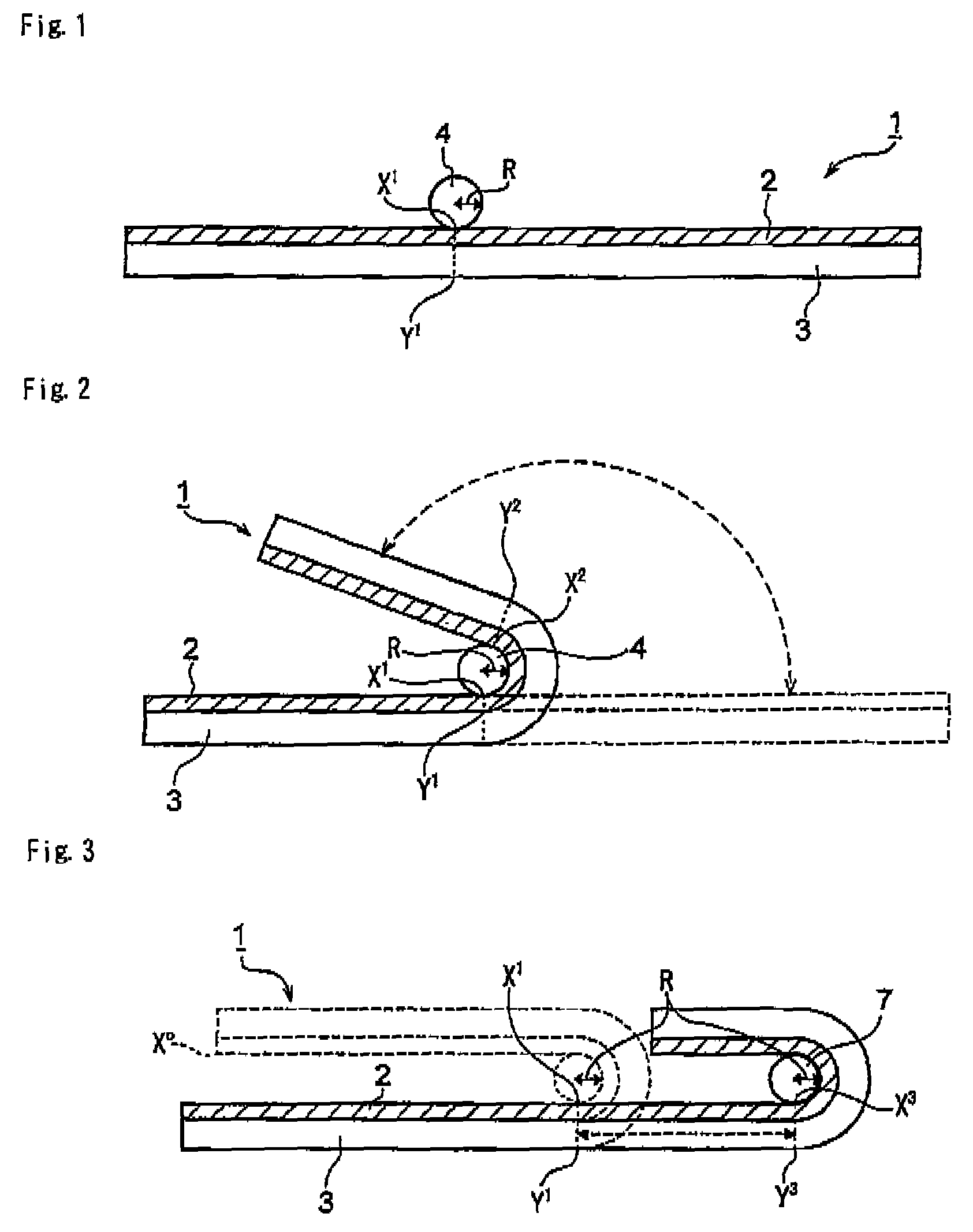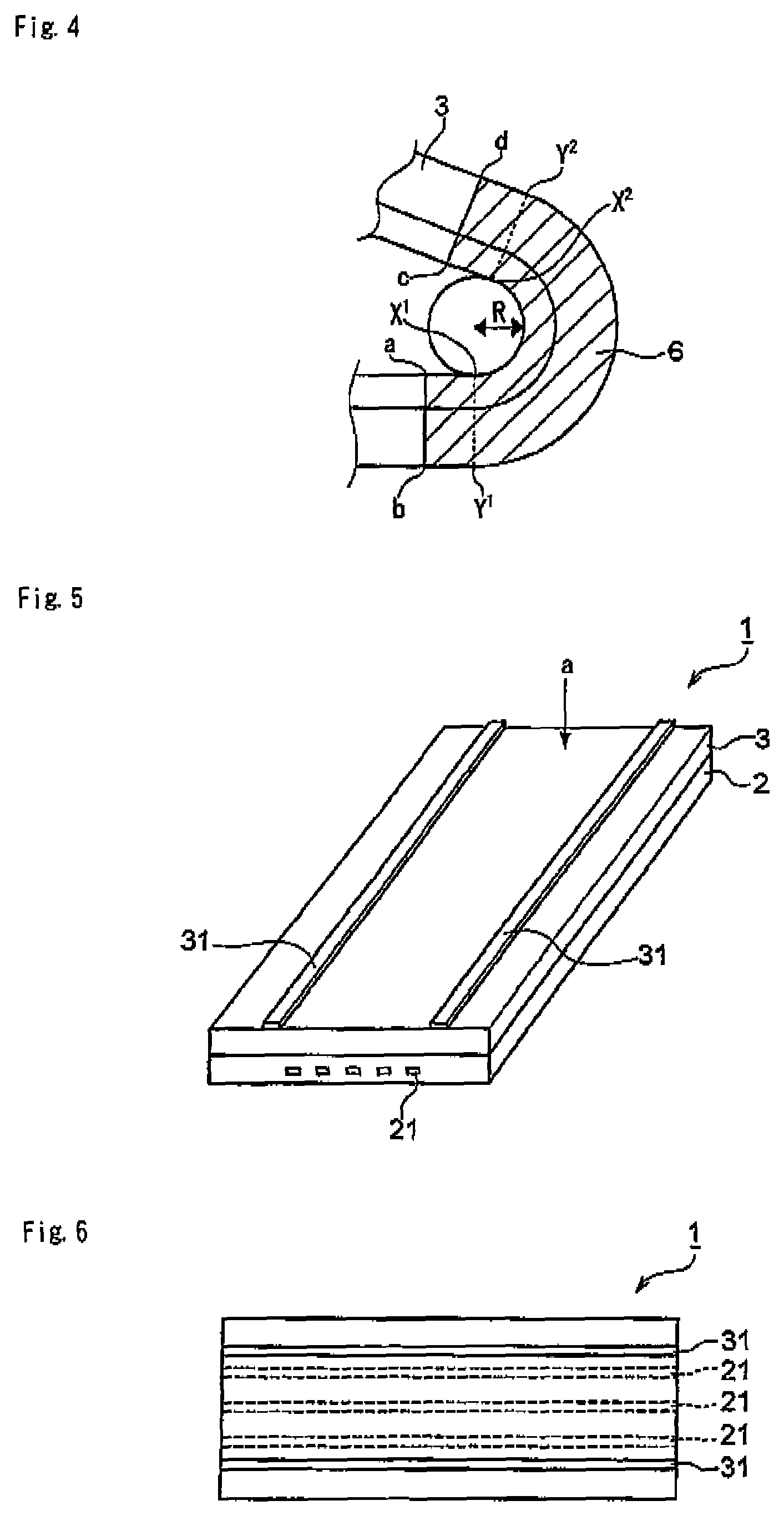Opto-electric combined circuit board and electronic devices
a combined circuit board and opto-electric technology, applied in the direction of optical elements, circuit optical details, instruments, etc., can solve the problems of braking and cracking, high disadvantage, liable to be broken, etc., and achieve good flexural durability and good communication function.
- Summary
- Abstract
- Description
- Claims
- Application Information
AI Technical Summary
Benefits of technology
Problems solved by technology
Method used
Image
Examples
example 1
(1-1) Preparation of an Optical Waveguide
Preparation of a Resin Film for Forming a Cladding Layer:
[0079]Weighed into a wide mouth plastic bottle were 48 parts by mass of a phenoxy resin (trade name: Phenotohto YP-70, manufactured by Tohto Kasei Co., Ltd.) as the binder polymer (A), 49.6 parts by mass of alicyclic diepoxycarboxylate (trade name: KRM-2110, molecular weight: 252, manufactured by Asahi Denka Co., Ltd.) as the photopolymerizable compound (B), 2 parts by mass of a triphenylsulfonium hexafluoroantimonate salt (trade name: SP-170, manufactured by Asahi Denka Co., Ltd.) as the photopolymerization initiator (C), 0.4 part by mass of SP-100 (trade name, manufactured by Asahi Denka Co., Ltd.) as a sensitizer and 40 parts by mass of propylene glycol monomethyl ether acetate as an organic solvent, and the mixture was stirred for 6 hours on the conditions of a temperature of 25° C. and a revolution of 400 rpm by means of a mechanical stirrer, a shaft and a propeller to prepare a re...
reference example 1
[0099]The optical waveguide simple body prepared in Example 1 was used to carry out a bending durability test as was the case with the opto-electric combined circuit board prepared in Example 1. The results thereof are shown in Table 1.
[0100]
TABLE 1Bendingbending durabilityradius (R) (mm)test (frequency)Example 11.5350,0001.0100,000Comparative1.510,000Example 11.01,000Comparative1.520,000Example 21.05,000Reference1.550,000Example 11.010,000
[0101]As shown in Table 1, it can be found that a bending durability of the opto-electric combined circuit board is dramatically enhanced by controlling the core part of the optical waveguide and the electric wiring in the bending part so that they are not overlapped in a projection plane.
PUM
 Login to View More
Login to View More Abstract
Description
Claims
Application Information
 Login to View More
Login to View More - R&D
- Intellectual Property
- Life Sciences
- Materials
- Tech Scout
- Unparalleled Data Quality
- Higher Quality Content
- 60% Fewer Hallucinations
Browse by: Latest US Patents, China's latest patents, Technical Efficacy Thesaurus, Application Domain, Technology Topic, Popular Technical Reports.
© 2025 PatSnap. All rights reserved.Legal|Privacy policy|Modern Slavery Act Transparency Statement|Sitemap|About US| Contact US: help@patsnap.com



